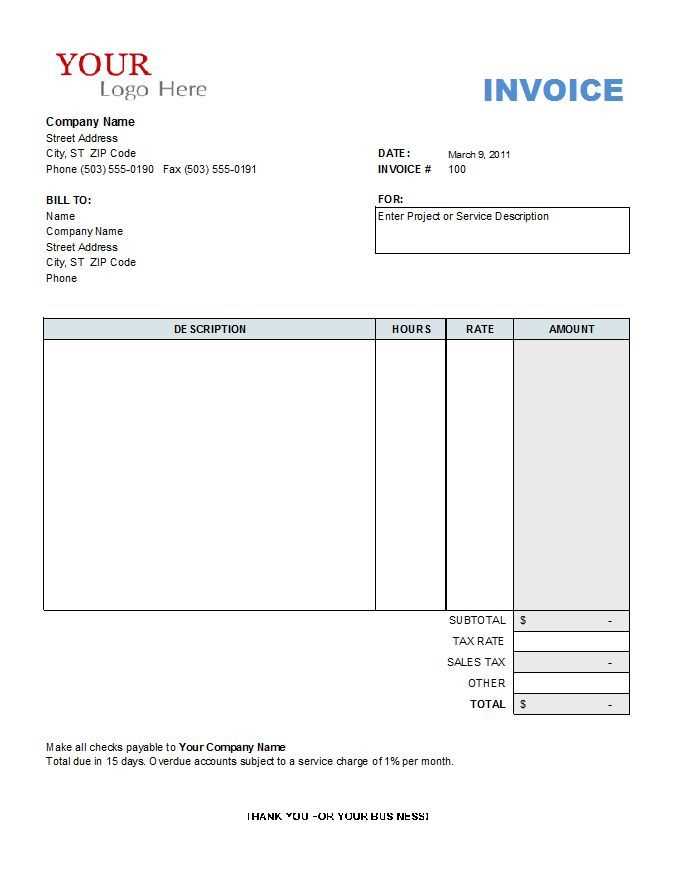
When preparing a construction receipt, clarity and accuracy are key. A well-organized template ensures that both contractors and clients can easily track payments and services. Start by including the project name, the client’s contact details, and the construction company’s information. Be sure to specify the scope of work, materials provided, and labor costs.
Use clear breakdowns for each expense category. Include a section for taxes and discounts, if applicable, to avoid confusion. To maintain transparency, add an itemized list of services rendered, along with their respective costs. Always provide the payment terms and any due dates to prevent misunderstandings.
Incorporate a unique receipt number for each transaction to easily reference and track payments. This simple addition can save time and improve organization, particularly when dealing with multiple projects or clients.
Finally, make sure the receipt is signed by both parties. This serves as confirmation that all work has been completed to the client’s satisfaction and that the payment amount is agreed upon. With a solid template, both parties can have a clear record of the transaction.
Construction Receipt Template
A well-structured construction receipt template ensures clear communication between contractors and clients. It should include key details such as the project name, contractor information, work completed, and total costs. This straightforward format avoids confusion and keeps financial records transparent.
Key Elements of the Template
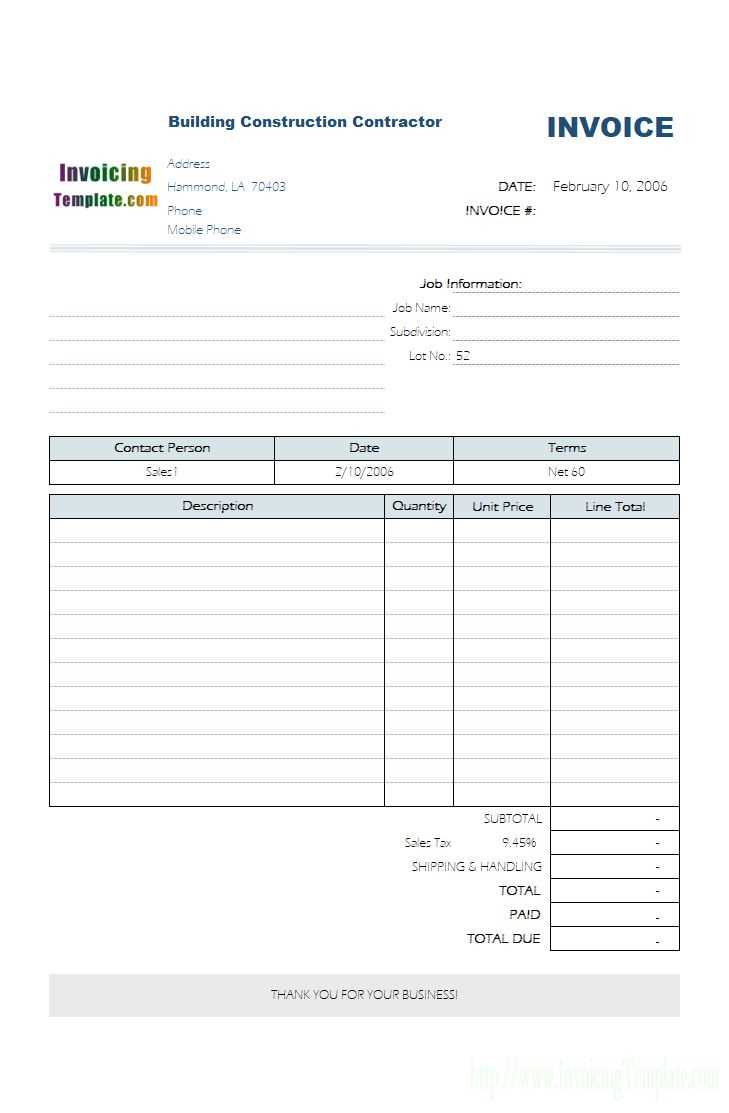
Start by including the company or contractor’s name and contact details. Include the client’s name, project address, and a brief description of the work performed. Clearly outline the breakdown of materials, labor costs, and any additional fees.
Payment Details
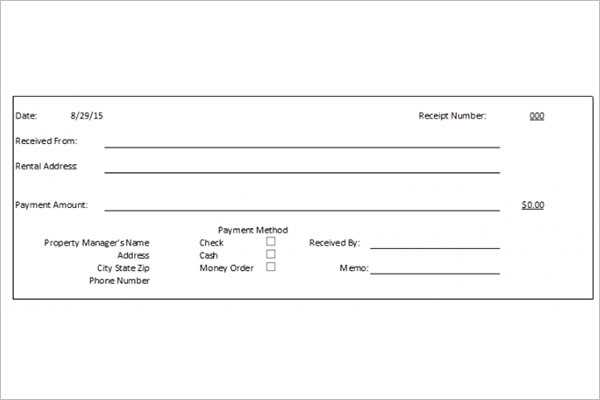
Specify the payment terms, including the total amount due, payment method, and due date. If applicable, include taxes, discounts, or deposits that impact the total. Always ensure the receipt is easy to read and understand for both parties.
Use clear sections to avoid clutter, and keep the format consistent for future transactions.
How to Create a Custom Construction Receipt
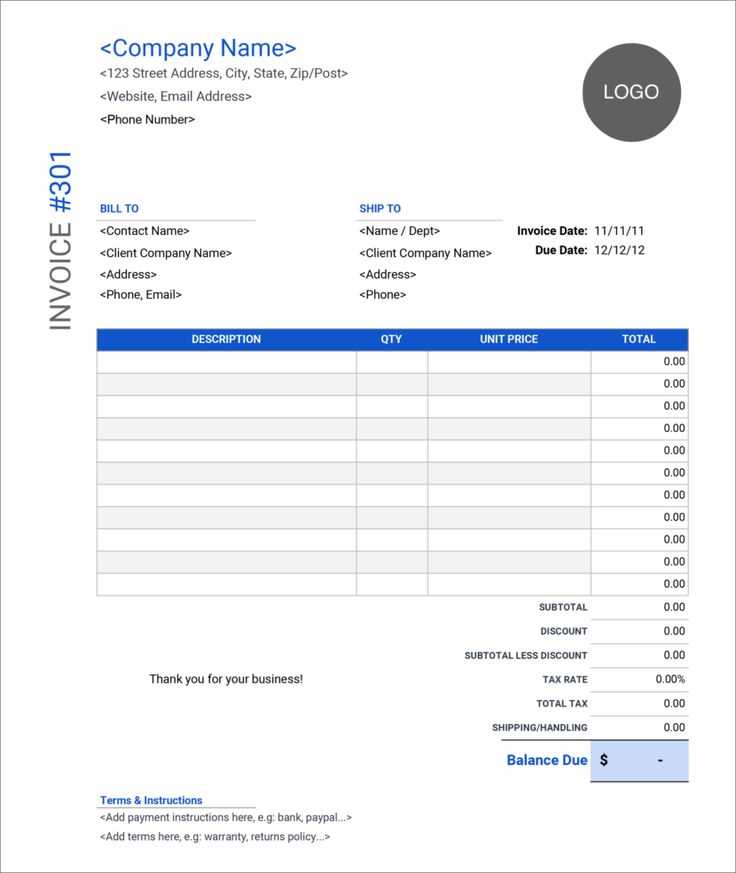
To create a custom construction receipt, focus on including all necessary details that accurately represent the work done. First, list the business name, address, and contact details at the top. This ensures clear identification of the service provider.
Include the recipient’s information–client name, address, and contact details. Specify the date of the transaction to keep a precise record.
Next, describe the services provided. Break down the construction work into clear, itemized sections with the corresponding costs for each task. Use a simple table format for easy readability. List materials used with their quantities and costs, including labor charges separately.
For transparency, add the total cost of services at the bottom, including taxes and any discounts applied. Specify payment terms: whether the payment was made in full, partially, or remains due, along with the due date for any remaining balance.
Finally, add a section for signatures. This confirms that both parties agree to the terms and the completion of the work as outlined in the receipt. You can also include any other relevant notes, like warranties or future service agreements.
Key Elements to Include in Your Construction Receipt
Include these specific elements in your construction receipt to ensure clarity and professionalism:
- Company Details: Clearly list the company name, address, contact information, and business registration number.
- Receipt Number: Assign a unique number to each receipt for easy reference and tracking.
- Date of Transaction: State the exact date when the payment or service was completed.
- Client Information: Include the name, address, and contact details of the client receiving the service.
- Description of Services or Products: Provide a detailed list of the construction services or materials delivered, along with quantities and unit prices.
- Total Amount: Clearly show the total amount paid, including any taxes or additional fees. Break down the cost for transparency.
- Payment Method: Indicate whether the payment was made via cash, check, bank transfer, or credit card.
- Terms and Conditions: Briefly include any relevant payment terms, such as due dates, late fees, or warranties.
- Signature: Have a space for both the contractor and client to sign, acknowledging the transaction.
By including these components, both parties will have a clear understanding of the transaction and protect themselves in case of disputes.
How to Adjust the Template for Different Project Types
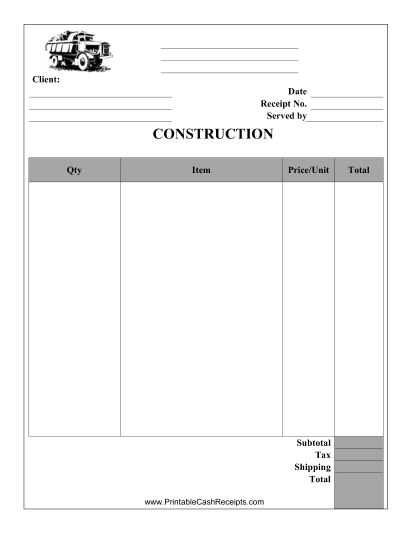
Customize your construction receipt template based on the scope and specifics of each project. Begin by adjusting the layout to match the scale of the project. For small projects, simplify the sections, focusing on key details such as labor, materials, and total costs. For large-scale projects, expand the template to include multiple line items for different phases, subcontractors, and additional resources. This provides a clearer breakdown of expenses.
Adjust for Project Complexity
If the project involves multiple trades or services, include specific sections for each. This could mean separating costs for plumbing, electrical work, or structural components. Label each section clearly and group similar costs together for better clarity.
Tailor Payment Terms
Different projects may require different payment structures. For simple home repairs, a single payment might suffice. For large construction works, break payments into milestones, ensuring the client is charged upon the completion of specific stages. Make sure to specify the due dates and any applicable taxes.
By adjusting these elements, the receipt becomes not only a tool for tracking expenses but also an organized summary that aligns with the unique needs of each project.


